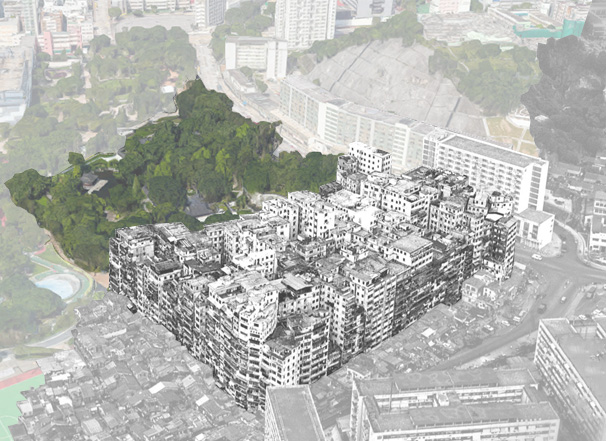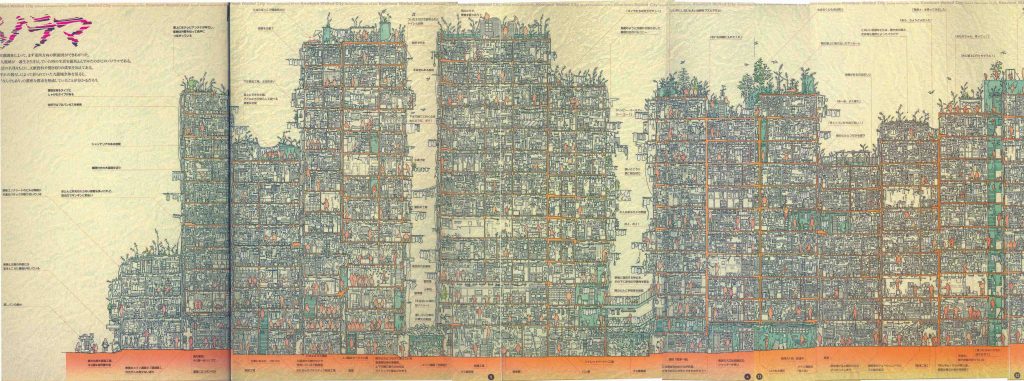Today, continuing on the path of previous publications – and as a suggestion from our users – we decided to return to the Asian world; specifically to the city of Kowloon, in Hong Kong. To look at this geographical point means to understand a place of multiple changes, propitiated by the events that the Asian giant suffered last century.
British or Chinese…?
The city emerges as a fortress to guard the soldiers and control the salt trade in the area. The roller coaster of change began in 1842; China lost the first opium war and ceded part of its land to the British power. As a preventive measure, the Asian country decides to fortify the city even more -still under its control-, building a large granite wall to protect itself. However, the situation is only tense, as after the second opium war, China is defeated. This defeat will cause the country to give up even more land, intensifying tensions among the population.
The English empire ended up occupying almost the entire bay with diplomatic treaties. The latter agrees not to keep the walled city as long as the Asian country does not station troops in the area. Retracting a year later, the United Kingdom carries out an incursion, where it expels the entire population and claims the territory.
The British government does not carry out repopulation actions, and this territory is abandoned. The subsequent development and political instability in China led many people to decide to emigrate to this enclave. The city offers them a place without laws, since Great Britain is not responsible for the territory, and its former owner cannot manage the place. Kowloon apparently grows out of control, as a capital for refugees and those seeking a different life.

Kowloon: How to survive in hell?
It is quite impressive that during the 30-40 years in which the city was an extremely densely populated suburb, there were no fires or outbreaks of major diseases.
Gordon Jones, former district official.
The situation of lack of control and lack of civil regulations is attracting persecuted businesses in the big cities, which establish here focal points of exchange and management. The city thrives on the mere interest of those operating in its interior, where despite the fact that there is an asphyxiated population in a sea of alleyways, there remains a control by the gangs to maintain hegemony. Citizen management mechanisms are created to control security, cleanliness and construction. Kowloon becomes an independent, private enclosure, delimited by its walls and the height defined by the airport.
There were disputes over “territory”, members, brothels, and opium houses. Fights with knives where people often died. They didn’t happen on the main streets. If they didn’t happen on the main streets, nobody cared.
Paul Tang Kam-Cheung, former Triad member.
In this self-governed precinct, it is true that the triads (criminal organizations) took advantage of the absence of police or civil regulations, but these groups understood that in order for the business to continue to operate, the city must continue to develop. In the end, the problems of the triads were hidden inside the -already- mysterious place, generating a different social face.
The end of the city begins to be glimpsed when Great Britain cedes ownership of the territory to China in 1984. From here the Asian country is responsible for making plans for demolition, relocation of citizens, and projects to occupy the land. Around 1994, a demolition project was launched, establishing a large open green space. Thus dies what was once the densest city in the world, producing a stark contrast in the development of the action.

However, the city of Kowloon has made a dent in the mind of the creative industry -cinema, literature, video games, entertainment venues… -, generating a cultural heritage around it. During the 1980s, the reference point for dystopian cities was Kowloon, serving as a stimulus when it came to imagining cities like Los Angeles in Blade Runner.
In spite of the hours of joy that this leisure time can give us, we think that it is time to go back to studying this place, going deeply into it and learning from it. If we assume this dark side, we find ourselves with a clear case of self-management and citizen control, something that is totally contemporary. We could also learn lessons in organization, other ethics, negotiation, and ways of managing extremely compact spaces. We believe that extremes are didactic places, and although we obviously do not share the living conditions there, the management mechanisms that germinated in this atmosphere seem worthy of study.

If, like us, you are interested in getting to know the city of Kowloon a little more, we invite you to come here to see testimonies of people, see photographs or videos of it and other works inspired by the place. We invite you to tell us what else you think we can learn, or what we should avoid by looking at this lost city.
0 thoughts on “The Unowned City: Kowloon’s Legal Limbo”